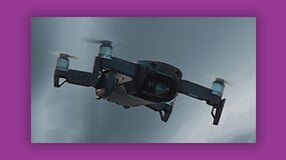Don't Be Left in the Dark: Brief History of Light Emission Devices

One of the best things about working for a company like HZO is the opportunity to be exposed to an extremely wide variety of technologies (apart from our own). Our seasoned technicians test and validate new products daily, from minuscule medical sensors to large electronic display boards. The technology driving these amazing devices is astounding. We could go on and on about the cool and fascinating technology that passes through an HZO production floor, but today we wanted to focus on one; the “Light Emitting Diode” or LED.
Behind most innovative technologies is an interesting story. Years and even centuries of trying, testing, and arduous development go into every bit of technology we now take for granted. The same is true of the “LED.” LED bulbs and displays have been in the mainstream for almost a decade now and are continuing to saturate the lighting world, but instead of focusing on the future applications for the technology, let’s review its history:
- 1907 – An Englishman named Henry Joseph Round discovers that inorganic materials (specifically, raw silicon carbide) can light up when an electric current is applied.
- 1921 – The Russian physicist Oleg Losev again observes the “Round effect” of light emission. In the preceding years, from 1924 to 1930, he published 16 papers outlining the LED and its applications.
- 1935 – French Physicist Georges Destriau discovers light emission in zinc sulfide. Today Destriau is credited as the inventor of electroluminescence.
- 1951 – The development of a transistor marks a scientific step forward in semiconductor physics.
- 1962 – American Dr. Nick Holonyak Jr. develops the first visible red LED. This marked the beginning of the industrially-produced LED.
- 1968 – The Monsanto Company produces visible red LED’s on a massive scale and becomes the first to produce affordable LEDs.
- 1971 – Due to the development of new semiconductor materials, LEDs are produced in new colors: green, orange, and yellow. The LED’s performance and effectiveness continue to improve.
- 1993 – Shuji Nakamura develops the first brilliant blue LED, which would be critical in developing the white LED. Nakamura (along with Isamu Akasaki and Hiroshi Amano) would win the 2014 Noble Prize in Physics for this discovery.
- 1995 – The first LED with white light from luminescence conversion is presented and launched on the market two years later.
- 2006 – The first light-emitting diodes with 100 lumens per watt are produced.
- 2010 – LEDs of multiple colors are being mass-produced with luminous efficacy of 250+ lumens.
Only a century ago, people accustomed to lighting candles and cleaning kerosene lamps stood in awe at the reliable glow of the incandescent lamps developed by Thomas Edison and his contemporaries in the late 1880s and early 90s. Now all we have to do is turn on our oversized TVs, glance at an electronic billboard driving down the freeway, or check the electronic scoreboard at a ball game to see what light has become. LEDs are everywhere, and we see them incorporated more into outdoor signage and advertisements. HZO is excited about this. These LED boards are exposed to everything Mother Nature can throw at them, and unless they are protected from the elements, the vital electronics will inevitably fail. HZO’s thin film barrier is highly reliable and able to extend the life of electronics thanks to our ability to meet the unique requirements of our customers. HZO goes well beyond water protection: It exceeds industry standards for salt, humidity, and temperature testing. As well as protecting against dust and debris, HZO coatings are transparent. So when protecting massive yet intricate LED boards, don’t settle for anything but the best.
How to Make Your Lithium-ion Battery Design More Sustainable
Conformal Coating for Drones - Which is Best?
Solving Weather & Water Challenges For Smart Farms | HZO
Multi-skilled marketing director with more than 18 years’ experience in growing the customers and brands of diverse companies. Ability to meet diverse marketing challenges by utilizing experience, skills, and creativity. Expertise in demand generation, content, branding, design, and communications.
Additional Resources

Learn More About the Benefits of Protective Consumer Electronics Coatings

Learn About the Benefits of Protective Automotive Coatings

Learn About the Benefits of Protective Industrial Coatings

Learn About the Benefits of Protective Medical Device Coatings







